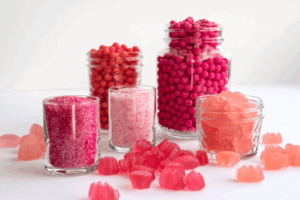Automation exists in a range of different industries, as manufacturers capitalise on the numerous benefits it offers. Broadly speaking, automation refers to the integration of automatic equipment in a manufacturing facility. Industrial automation refers to the control of machinery and processes in various industries, as it’s most commonly used in agriculture, manufacturing and automotives. What shape this takes for the confectionery industry and what the future of confectionery production might look like, needs to be further explored.
The pandemic saw mass disruption of the supply chain, as multiple factories were forced to close their operations. Those that remained open, did so with strict social distancing guidelines in place, which resulted in fewer employees working together in the same space. Both outcomes had a significant impact on the production of consumer goods, while demand for confectionery products only continued to grow. The National Confectioners Association’s (NCA) 2021 report categorised confectionery as the fifth largest grocery category. Sales of chocolate products came to US$15.2 billion, followed by non-chocolate at US$7.9 billion and gums and mints at US$3 billion. The number of households buying chocolate and candy online in 2020 increased by 76%, all figures which demonstrate continually growing demand, and the need for secure supply.
Although the restrictions brought on by the pandemic have lessened, the impact of it is still felt. One report from Market Research compared the confectionery market’s growth in the forecast period 2015-2019 to a forecast period of 2020-2024 and recorded a decrease in growth, from 1.92% to 0.82%. The failure to meet consumer demand and, in some cases, halt production altogether, revealed the fragility of the existing supply chain, and therefore the necessitation for improved technology to ensure that should this happen again, production can continue. This is where automation comes in. Not only does automation allow for factories to increase their production rates, but it decreases the chances of operational breakdown, which means that in the long-run, the productivity and profit margins of factories are both up.
As final steps in the confectionery process, packaging and palletising is crucial for ensuring quality, appearance and uniformity in the confectionery about to be transported. Automating these processes guarantees this, as well as freeing up workers carrying out manual packaging and palletising to complete other tasks. Manual confectionery packaging can result in injury – as carrying out repetitive, physically stressful tasks is linked with musculoskeletal injuries – on top of resulting in hygiene issues and food wastage. Automating confectionery production processes as well as collecting data in conjunction reduces the chance of these risks happening and presents manufacturers with ways of improving their processes, as data-driven decisions are the way forward.
What does automated packaging and palletising look like in confectionery? For automated packaging there are a number of options available on the market, with vertical form fill seal (VFFS) machines being among the most popular. The idea behind the VFFS machine was first conceived by Walter Zwoyer, while working with the Henry Heide Candy Company, who produced Jujyfruits, which are gumdrop candies. Coined ‘transwrap machines’ to reflect the main packaging material being cellophane, demand for transwrap machines grew quickly and has remained constant ever since...
To read more see our latest issue here.
Media contact
Caitlin Gittins
Editor, International Confectionery
Tel: +44 (0) 1622 823 920
Email: [email protected]








